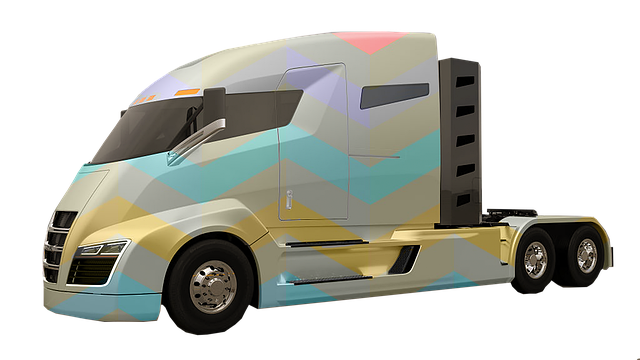Looking to register your car in California? This guide walks you through the entire process, from understanding state requirements to gathering essential documents and even using a DMV-approved VIN verifier. Learn how to locate your local DMV office, make an appointment, complete the registration application, and ensure your vehicle’s unique VIN is verified for a smooth, efficient registration experience.
- Understand California Car Registration Requirements
- Gather Necessary Documents for Vehicle Registration
- Locate Your Local DMV Office and Make an Appointment
- Complete and Submit the California Vehicle Registration Application
- Verify Your Vehicle's VIN with a DMV-Approved Service
Understand California Car Registration Requirements

Before registering your car in California, it’s crucial to understand the state’s specific requirements for vehicle registration. According to the California Department of Motor Vehicles (DMV), all vehicles operated on public roads within the state must be properly registered. This includes cars, trucks, motorcycles, and other motor vehicles. One key aspect is ensuring that your car has a valid and accurate Vehicle Identification Number (VIN) verifier, which can typically be obtained through a mobile VIN inspection or by visiting a local DMV office.
Additionally, you’ll need to provide essential documentation such as proof of ownership, a completed application form, and the necessary fees. A mobile VIN verifier can play a crucial role in this process, ensuring that your vehicle’s history is accurately checked before registration. This helps in verifying the car’s condition, previous accidents, and outstanding issues, making the registration process smoother and more efficient.
Gather Necessary Documents for Vehicle Registration

Before heading to the California Department of Motor Vehicles (DMV) for registration, ensure you have all the essential documents. The process typically requires proof of ownership, which can be established through a vehicle’s Certificate of Title or a valid bill of sale. Additionally, you’ll need your Vehicle Identification Number (VIN), usually found on a plate located in the vehicle’s dashboard or on the door frame. A reliable way to obtain this information is by using a DMV VIN verifier, which cross-references the VIN with state records to verify its authenticity.
For a smoother process, consider obtaining a mobile vin inspection or verification service. These services send a professional to your location to perform an inspection and provide you with all necessary documents. This can be particularly useful if you’re registering a classic car or have encountered any issues with the vehicle’s history. Remember to bring valid identification documents as well, such as a driver’s license or state-issued ID card.
Locate Your Local DMV Office and Make an Appointment

Before you begin the registration process, it’s essential to locate your local Department of Motor Vehicles (DMV) office and schedule an appointment. The DMV serves as the primary point of contact for all vehicle-related transactions in California. You can easily find your nearest DMV branch by visiting their official website or using their online directory. Many offices now offer the convenience of scheduling appointments online, which can save you valuable time and often reduces wait times.
When preparing for your visit, consider utilizing a mobile VIN verifier or performing a VIN inspection to ensure all vehicle documentation is in order. This step will streamline the registration process and help prevent potential issues with the DMV staff, especially during peak seasons when waiting times can be lengthy.
Complete and Submit the California Vehicle Registration Application

To begin the registration process for your car in California, you’ll need to complete and submit the California Vehicle Registration Application (Form DV-140). This form is your official request to register your vehicle with the Department of Motor Vehicles (DMV). Ensure all information provided is accurate and up-to-date. One crucial step before submission is to have your vehicle’s VIN (Vehicle Identification Number) verified through a trusted DMV vin verifier or mobile vin verifier. This process ensures that your car matches the records with the manufacturer, preventing any fraud or tampering.
After verification, submit the application along with required documents and fees. You can do this in person at a local DMV office or by mail, depending on your preference. Have your vehicle inspection completed to ensure it meets safety and emission standards. With all documentation in order, including proof of insurance, you’ll be well on your way to registering your car in California using the mobile vin verification process as directed by the DMV guidelines.
Verify Your Vehicle's VIN with a DMV-Approved Service

Before proceeding with the registration process, it’s crucial to ensure your vehicle’s VIN (Vehicle Identification Number) is legitimate and accurately displayed. This step involves verifying the VIN through a DMV-approved service, which helps in maintaining the integrity of California’s record-keeping system. You can use online tools or mobile apps designed for this purpose, known as mobile VIN verifiers. These services cross-check the VIN against state databases to confirm its authenticity and ensure it matches the vehicle’s current condition.
A valid VIN inspection is essential as it protects both buyers and sellers from potential fraud. By utilizing these approved methods, such as a mobile VIN inspection, you can have peace of mind knowing that your car’s registration is based on accurate information. This simple step adds an extra layer of security to the vehicle registration process in California.
Registering your car in California is a straightforward process once you understand the requirements and have all necessary documents. By completing these steps, from gathering paperwork to verifying your vehicle’s VIN with a DMV-approved service, you’ll be well on your way to securing a valid registration. Don’t forget to make an appointment at your local DMV office for a smooth experience. With the right preparation, you can ensure your vehicle is legally registered and ready to hit the California roads.
